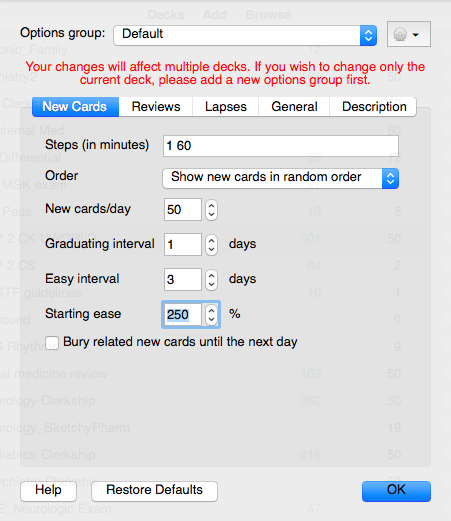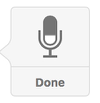How to use Anki for Step 1 or 2 (or shelf prep!)
I love Anki for Med School, but there is definitely a learning curve particularly with review settings.
To help you get started, I wanted to share my settings I used for my last month of dedicated CK review as a starting point. As most clinical rotations also fall around the time period of dedicated Step study period, this guide is also helpful on how to use Anki for dedicated shelf prep. If you find you are seeing old cards too often, are seeing too many new cards, then make adjustments as you see fit. If you are wondering how to make Anki cards more quickly, check out our post on dictating your Anki cards.
How to change settings for a deck

Click the cogwheel (the top right above) and then select “options”

New cards/day
50 new cards a day should get you through 1.4k cards during your dedicated if you keep up with prep which is about how many cards I had from my deck from missed UW questions. If you are using one of the larger premade decks like Zanki with 3000k+ cards, I would recommend either using these settings and starting two months in advance (rather than one) or, less ideally in my opinion, bumping it up to 100 new cards a day. 100 cards a day is a lot when you also have previous reviews.
Bury related cards
I have this unchecked because it will bury image occlusion cards or cards from tables you’ve made.
Reviews/day
To change the maximum number of reviews per day, toggle over to the “Review” tab. I set my maximum number of reviews to 300 which I was able to get through in an hour.
If you have a card “down” and don’t want to review it again
The “suspend” feature (aka “@” on your keyboard) was an incredibly useful tool on Anki, particularly during my last week of review when I only wanted to see my “higher yield” cards.
What makes “suspend” different than “bury” is that bury you will see this card again later, where suspend locks it in some Anki vault until you go to “Browse” and unsuspend it. I also used suspend over delete just in case I wanted to use the deck later (as I did with my shelf cards during CK prep).
⇉ Other helpful resources
• Step 2 CK Study Guide
• Step 2 CS Study Guide
• Shelf Resources (by subject)
• Anki Settings Help for Shelf or Step Prep
• How to make Anki Cards Efficiently
• Biostatistics for Step 2


